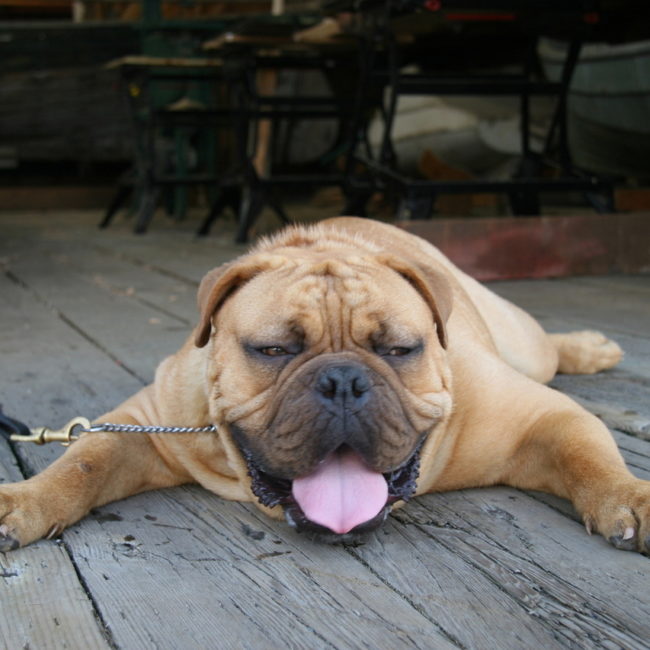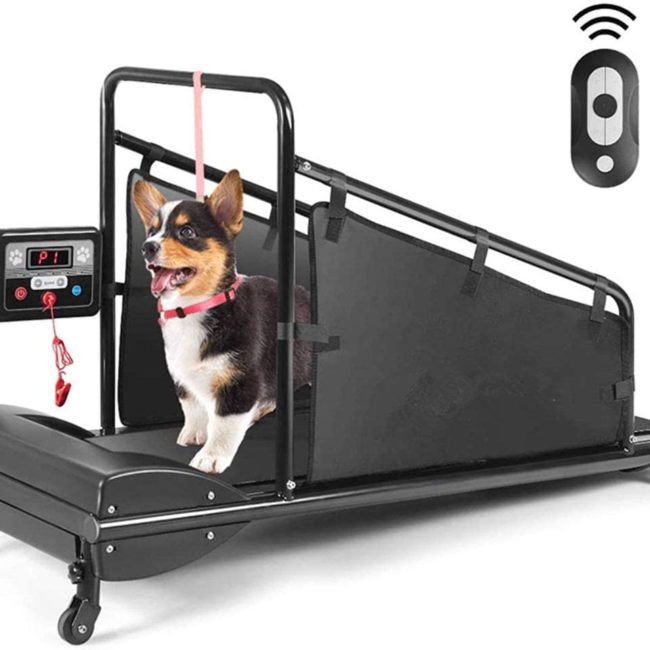healthy dogs equipment
Treadmills For Dogs

s a dog owner, you want to do everything you can to keep your canine happy, healthy and hearty. Ensuring they are well-trained, well-fed and that they get plenty of human interaction and exercise is all equally important.
Yet taking them out on their daily walk can sometimes be easier said than done. The weather may be absolutely frightful, you may be feeling under the weather yourself, or your own life may throw you a curveball and keep you away from the house for the entirety of the day.
This is where treadmills for dogs enter the stage and literally save the day. Never worry about the weather conditions or your own energy levels again, and take your dog on a walk or a run from the comfort of your own home.
Why Use Treadmills for Dogs?
Treadmills for dogs come with all the benefits that human treadmills also offer:

You don’t need to get your dog’s harness on, pick the appropriate footwear for yourself, figure out the best time of day or go back to find a poo bag just as you were about to walk out the door.
The treadmill doesn’t care what you’re wearing, and will welcome your dog whenever you need it to.
the treadmill is always there. Whether it’s pouring down outside or it’s scorching hot, your dog is still able to get their daily steps in.
As long as you are there to monitor their exercise if they need you to, they can hop on the treadmill at any time.
When life throws you lemons, the one thing you won’t have to worry about is when you’ll find the time to walk the dog.
No matter how busy your life gets, your pup’s health won’t have to suffer
When we humans don’t get enough exercise, we tend to feel more lethargic and sluggish. When our dogs don’t get enough exercise however, they start to misbehave, and you might find they have exacted revenge by chewing on your favorite belt.
Using a dog treadmill can therefore also:
- Prevent boredom: most dog breeds need to stay active to stay happy. Giving them a job gives them purpose and provides the stimulation they need.
- Improve behavior: physical exercise is a part of a dog’s training. When they get none or very little, they will start to act out, and may even stop following commands you’ve taught them back then they were puppies.
- Improve general fitness: of course, having a treadmill for your dog also means they will stay fit and healthy, and the two of you will be able to get up to all kinds of adventures together.
Canine obesity
The Dangers of Canine Obesity
Canine obesity is on the rise, and it is our job as dog owners to curb its rapid expansion. A combination of lack of exercise, low-quality food and overfeeding poses a serious threat to the health of our pets.
Some of the health risks associated with obesity in dogs include:
- Joint, bone and ligament issues: the excess weight a dog carries can cause chronic joint pain as well as long term damage to their bones and ligaments
- Canine diabetes: as the demand for insulin increases, a dog’s body may become unable to cope with it, resulting in diabetes type I or type II
- Heart disease and blood pressure issues: the excess weight will put an increased demand on a dog’s heart, which can lead to congestive heart failure or the inability to maintain their blood pressure at a healthy level
- Breathing difficulties: when the added weight starts pressing down on a dog’s chests, it can become more difficult for them to breathe
Overweight dogs also have less stamina, are less playful and vibrant, and tend to be more lethargic and listless.
All of these risks combine to shorten your dog’s life expectancy and significantly reduce their quality of life. And while you may find a chubby dog to be cute and funny, they themselves will only be struggling with the excess pounds they need to lug around on their frame every day.
Do right by your dog, and prevent canine obesity with a combination of a healthy diet and plenty of daily exercise.
Get them a dog treadmill.

Treadmills for dogs
Types of Dog Treadmills
There are several types of dog treadmills on the market, so you will certainly be able to find a model that fits your dog's size and exercise needs. Here are the most common ones:
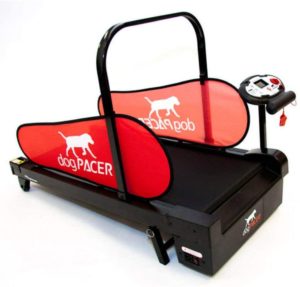
Types of dog treadmills
Motorized Dog Treadmills
Motorized dog treadmills are like the canine version of a human treadmill. They come with a, you guessed it, motor that powers the treadmill’s deck. You can manually adjust the speed of motorized treadmills, and you are also able to track the time and distance your dog has covered on it.
Some motorized dog treadmills also have adjustable inclines, so you can better simulate walking or running up a hill.
They come with side rails to ensure the dog can’t just step off the treadmill of their own accord, they are silent and impervious to dog hair. However, you need to supervise your dog on a motorized treadmill at all times, as they are not able to slow it down or turn it off themselves.
Types of dog treadmills
Non-Motorized Dog Treadmills
Non-motorized dog treadmills are propelled by the dog’s own movement, leaving them in control of the speed. Slatmills, carpetmills and treadwheels are the more popular variation of the non-motorized treadmill.
The main advantage of this type of treadmill is that it truly allows your dog to develop maximum speeds and to gallop to their heart’s content. A great choice if you are training for speed or preparing for a long-distance adventure.
Non-motorized treadmills allow your dog to move more naturally, and when you attach their lead to the treadmill’s bar, they are able to feel safe and secure, letting them focus on their agility as opposed to staying on the treadmill.
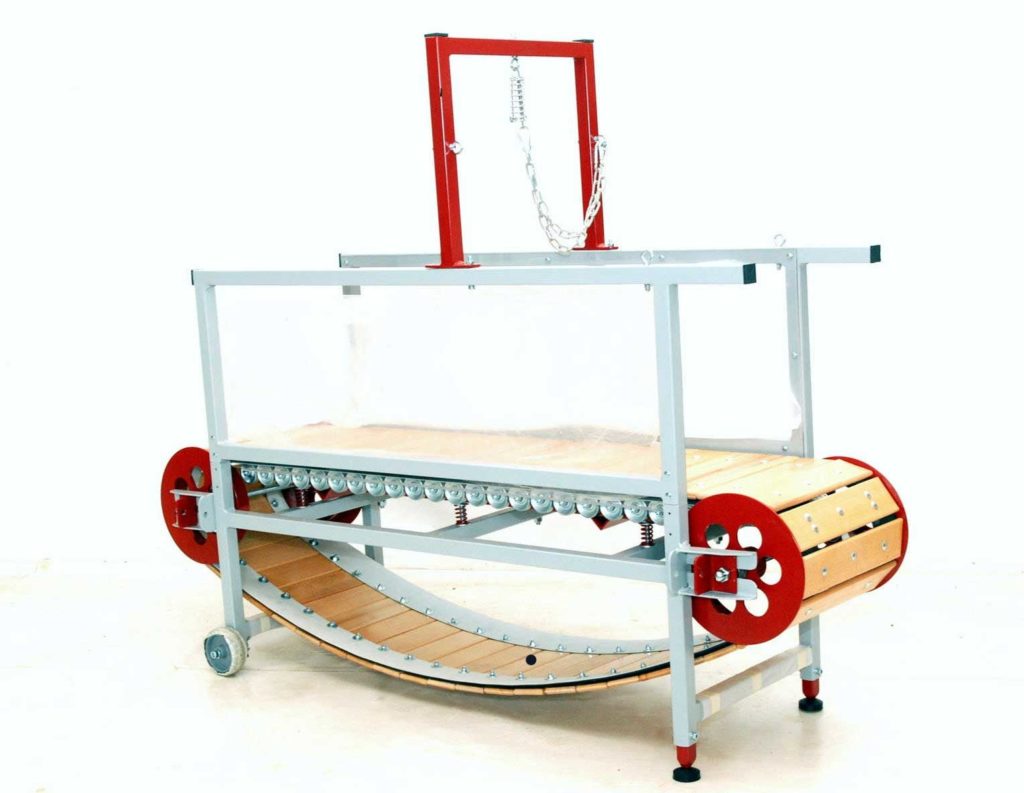
Types of dog treadmills
Slatmills
Slatmills use rolls and slats to create the deck your dog can run on. They are a great way to build muscle and stamina, and are used by owners of racing dogs.
They don’t usually offer an incline, but they compensate by allowing your dog to develop high speeds and completely tire themselves out.
Carpetmills
Carpetmills are similar to slatmills, but they use a carpet to form the deck as opposed to slats. The carpet is actually a shock-absorbing and slip-preventing material your dog can easily grip.
As they are non-motorized, they allow your dog to adjust the speed and intensity of the workout, and are a great way to train stamina and endurance.
Types of dog treadmills
Treadwheels
Treadwheels are essentially large hamster wheels made for dogs. They are powered by the dog’s movement, so they allow for anything from slow trots to bursts of high speed.
You don’t need to supervise your dog while they are using the treadwheel, as there is no motor involved and they are able to stop and step off at any time. Since it is such an unusual contraption though, it may require some getting used to.
Also bear in mind that treadwheels are only suitable for small dogs.
How to chose treadmill
Choosing a Treadmill for Your Dog
When choosing a treadmill for your dog, there are several key points you should consider.
Size
First, you need to figure out whether your dog needs a treadmill built for small and medium breeds or a treadmill for large breeds.
There are more models available for small dogs, so you will certainly be able to find one you like. Measure your dog from snout to tail, and bear in mind they need at least half that length in front and behind them for maximum comfort.
Space
you will also need to determine whether you have enough space in your home for the treadmill. Small breeds need small treadmills, and a lot of them can be folded down to fit beneath a bed or sofa.
Some models also come with wheels, so you can easily move the treadmill from room to room. The treadmill should never face the wall, so make sure you can angle it towards an open space.
Exercise goals
You also need to consider whether you need a treadmill your dog can use occasionally, every day, for competitive training, in order to slim down, and so on.
If you need them to be able to develop high speeds, you should check out non-motorized treadmills. If you are in the market for a slower and steadier workout, a motorized treadmill can work well.
Health
Talk to your vet before you purchase a treadmill, especially if you mean to use it to help your dog lose weight.
They will be able to advise you on the right kind of treadmill to purchase, and how to begin the training process.
Design
Finally, you also want to consider what the treadmill looks like and what kinds of features it comes with. Do you need an adjustable incline or a remote control?
Will you care if the treadmill comes in a bright red? Is your dog generally scared of loud noises? Do you want to be able to leave your dog to exercise on their own?
The Best Treadmills for Dogs
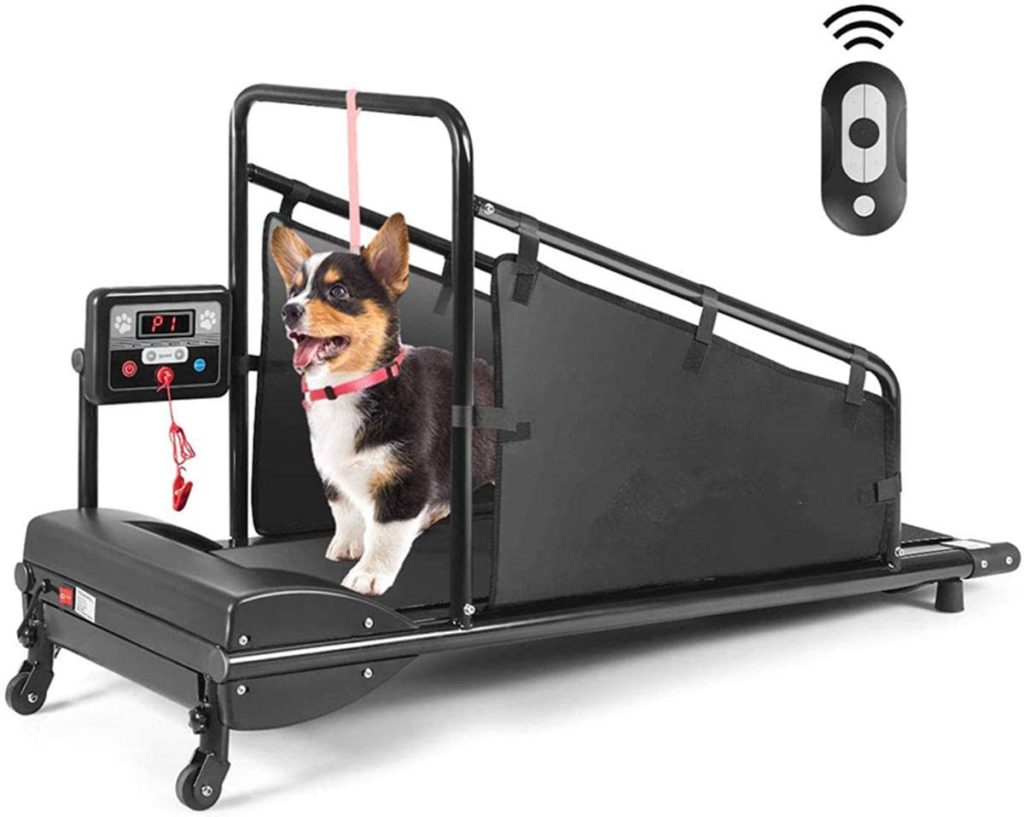
Whatever your requirements are, there is a dog treadmill model on the market that will cater to them.
We have made it our mission to review all of them over time and provide all the information you may need to make the best possible choice for your canine friend.
Check out our reviews and recommendations, and let us know your own experiences with dog treadmills. We’re always interested to hear what you have to say!
Do overweight dogs die sooner?
If you think your dog is obese, it’s high time you take firm action and ensure they lose the excess weight in a healthy and sustainable way.
How Do I Know if My Dog is Obese?
In fact, studies have shown that overweight dogs die sooner, so you might want to reconsider your attitude to your dog’s (excess) weight, and ensure that they remain fit, healthy
How Can We Prevent Obesity in Dogs?
Canine obesity is on the rise (as is human obesity, for that matter), and it is our job as dog owners to do our best to not only treat it, but prevent it.
How to Train Your Dog to Use a Treadmill?
Let us just remind you of the key ingredients of dog training first: patience, consistency, perseverance and treats. PCPT, if you need an acronym to commit it to memory more easily
Can Dogs Use Human Treadmills?
Are we talking about walking humans on treadmills? Or letting dogs use human treadmills? Is that even okay?


